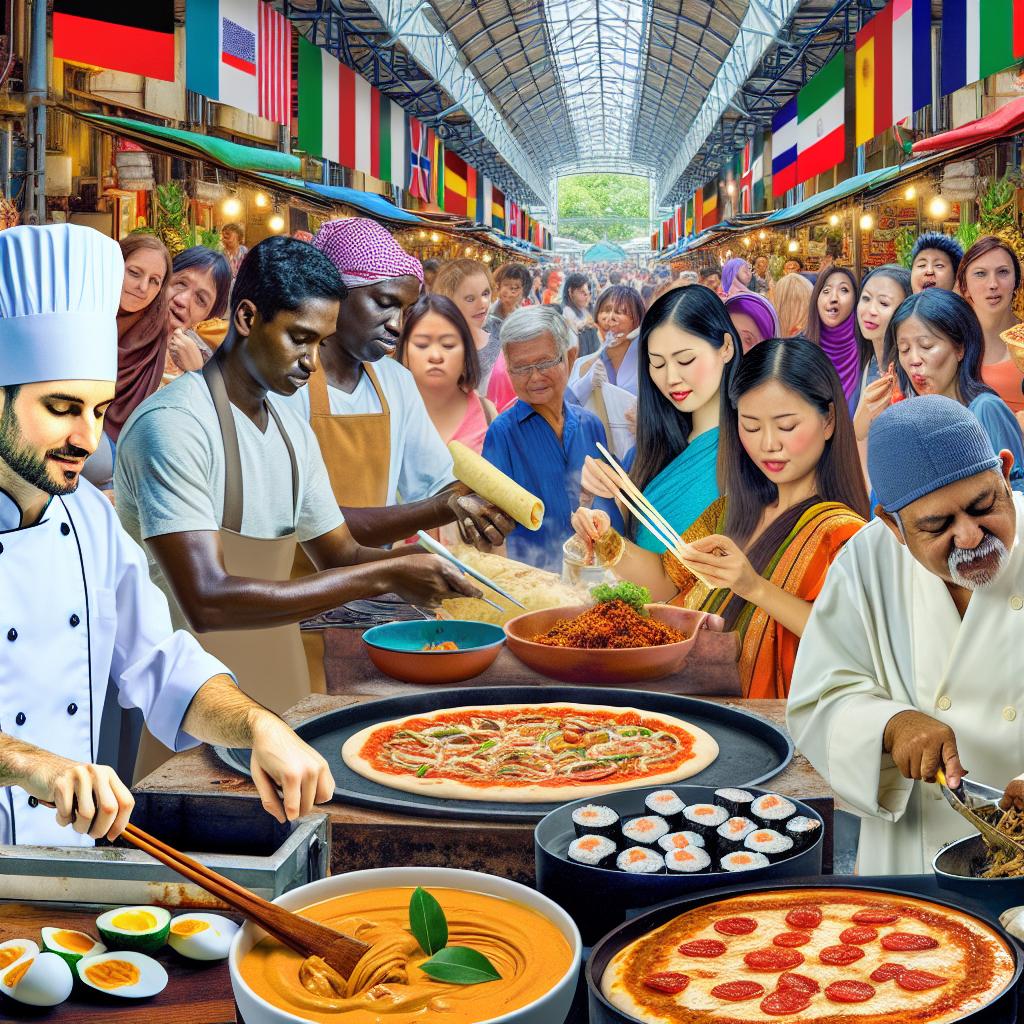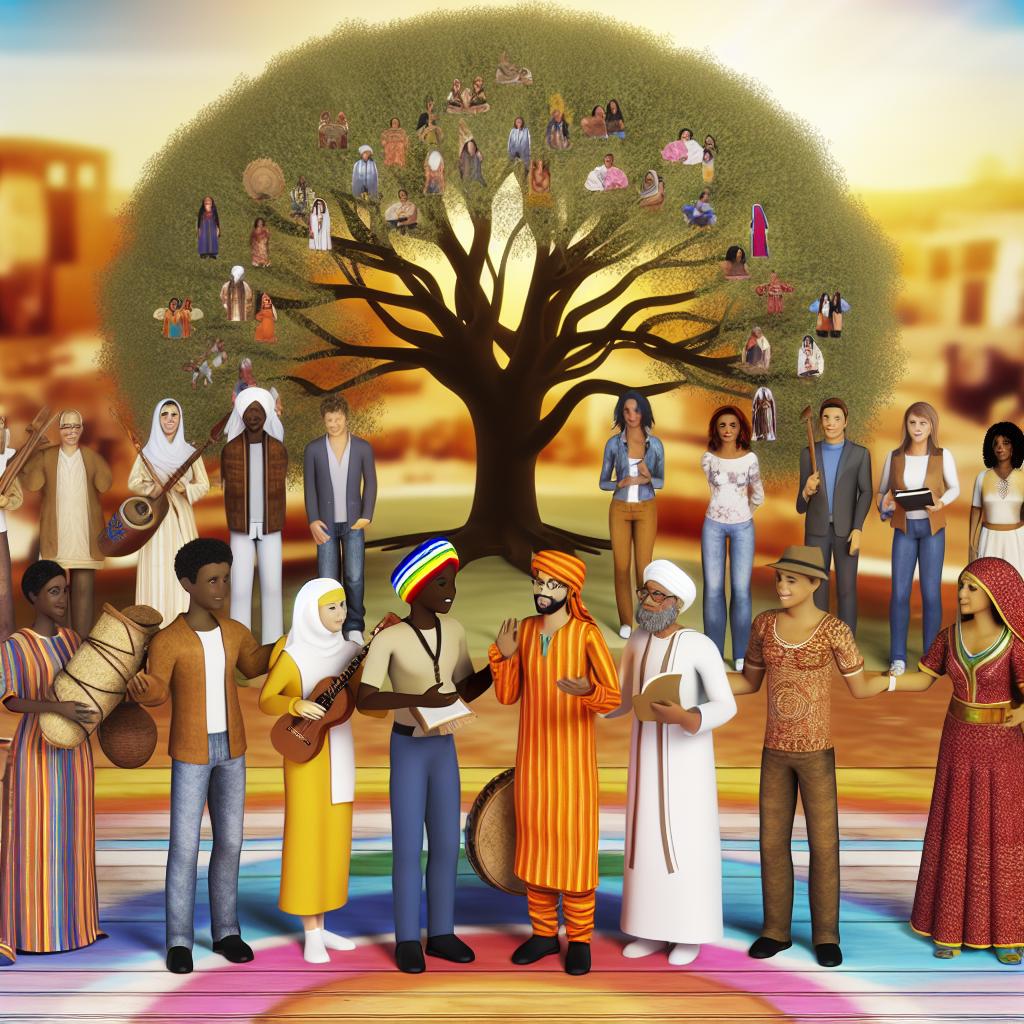Introduction to Food Culture and Globalization
Food culture has always been an essential aspect of human history and civilization. As societies have evolved, so too have the culinary practices and traditions that define them. With the advent of globalization, these once-distinct food cultures are increasingly interacting, blending, and influencing one another on an unprecedented scale.
The Impact of Globalization on Food Culture
The globalization phenomenon has enabled a broader exchange of ideas, goods, and cultural practices, including food. This widespread connectivity means that dishes, ingredients, and cooking techniques that were once confined to a specific geographical area are now accessible worldwide.
Transportation and Trade: Advances in transportation have made it feasible to import and export food products across the globe. For instance, fruits from the tropics like mangoes or bananas are commonly found in supermarkets worldwide, enabling people to experience flavors from distant lands. Modern shipping and logistics systems have reduced the time and cost associated with transporting perishable goods, further facilitating the distribution of diverse food products globally. This results in a marketplace where consumers can access goods otherwise unavailable in their local vicinity, thus broadening their culinary horizons.
Beyond produce, these advancements have impacted agricultural techniques and food production methodologies. Farmers across the globe can now adopt best practices learned from other regions, enhancing their efficiency and productivity. Such exchanges not only alter local economies but also shape the way populations engage with food on a daily basis.
Migration: Human migration has played a significant role in the spread of food cultures. As communities resettle in new regions, they bring their culinary traditions, which integrate and adapt to local tastes and ingredients. Immigrants contribute to food diversity by introducing new flavors and preparation techniques. This integration enriches local food scenes, offering an array of new dining experiences to native populations.
Moreover, migrant communities often open restaurants and food businesses, creating opportunities for cultural exchange. These establishments act as cultural ambassadors, allowing native populations to experience and appreciate the culinary heritage of different regions firsthand. This blending of cultures can result in innovative culinary practices and dishes that draw from diverse traditions, broadening the culinary landscape.
Cultural Exchange Through Food
The interaction between different food cultures leads to a cross-pollination of culinary ideas. This exchange often results in the creation of fusion dishes that combine elements from multiple cuisines. A classic example is the adaptation of Asian flavors into Western dishes, resulting in popular items such as sushi burritos or curry-flavored pasta.
Cooking Techniques: Techniques such as stir-frying, steaming, or smoking that originated in specific cultures have made their way into global culinary practices. Chefs and home cooks alike adopt these methods to create diverse gastronomic experiences. The exposure to varied cooking methodologies allows for innovative approaches to traditional recipes, resulting in dynamic interpretations that appeal to modern tastes.
Furthermore, culinary schools globally emphasize teaching a variety of international cooking techniques, preparing a new generation of chefs to think creatively about food preparation. The migration of expert chefs and culinary masters across borders further enriches local food cultures by introducing new techniques and interpretations of traditional culinary arts.
Ingredients and Flavors: Ingredients like quinoa, matcha, and avocado have gained global popularity, often being incorporated into cuisines far from their native regions. This exchange enriches diets and broadens the palates of individuals worldwide. As these ingredients become staples, they encourage experimentation with traditional recipes, leading to the evolution of cuisines everywhere.
The demand for novel flavors and ingredients has driven a global culinary market, expanding the availability of multicultural food items in supermarkets and restaurants. This accessibility introduces individuals to new tastes, fostering a global appreciation for diverse culinary traditions and contributing to the evolution of global food culture.
Challenges of Food Globalization
While the globalization of food culture brings many benefits, it also presents challenges.
Loss of Traditional Practices: The widespread adoption of global food items can sometimes lead to the diminishment of local food traditions. When global dishes and fast food chains dominate culinary landscapes, traditional practices may be at risk of being overshadowed or lost. This phenomenon threatens not only the culinary diversity but also the intangible cultural heritage that food practices represent. As convenience and uniformity take precedence, unique flavors and techniques risk becoming forgotten relics of the past.
Efforts are necessary to balance the popularity of international cuisine with the conservation of local food traditions. Preservation programs and cultural initiatives aimed at promoting native culinary practices can play a crucial role in maintaining a region’s cultural identity amidst globalization.
Homogenization: A potential downside of food globalization is the homogenization of culinary culture, where distinctive local cuisines become more uniform. This can lead to a decrease in biodiversity as global demand for specific ingredients increases, often at the expense of local varieties. The push for mass production of certain popular ingredients can threaten local ecosystems and agricultural diversity.
This homogenization also affects consumer tastes, as people become accustomed to standardized flavors and dishes marketed by global food companies. The risk is that the unique characteristics of distinct culinary traditions may become diluted, resulting in a loss of cultural uniqueness.
Conclusion
Globalization has profoundly influenced food culture, making it more accessible and diversified. While it offers opportunities for culinary innovation and cultural exchange, it is essential to be mindful of preserving traditional food practices and maintaining diversity in food systems. Balancing the benefits of globalization with the need to retain cultural uniqueness will continue to be a critical consideration in the evolving landscape of global food culture.
Efforts to safeguard and promote traditional foods and cooking methods must be prioritised to ensure that global culinary exchanges enhance rather than erase regional distinctions. By fostering an environment that cherishes both innovation and tradition, future generations can enjoy a rich and varied culinary world, deeply rooted in the diverse cultures from which their practices originate.



